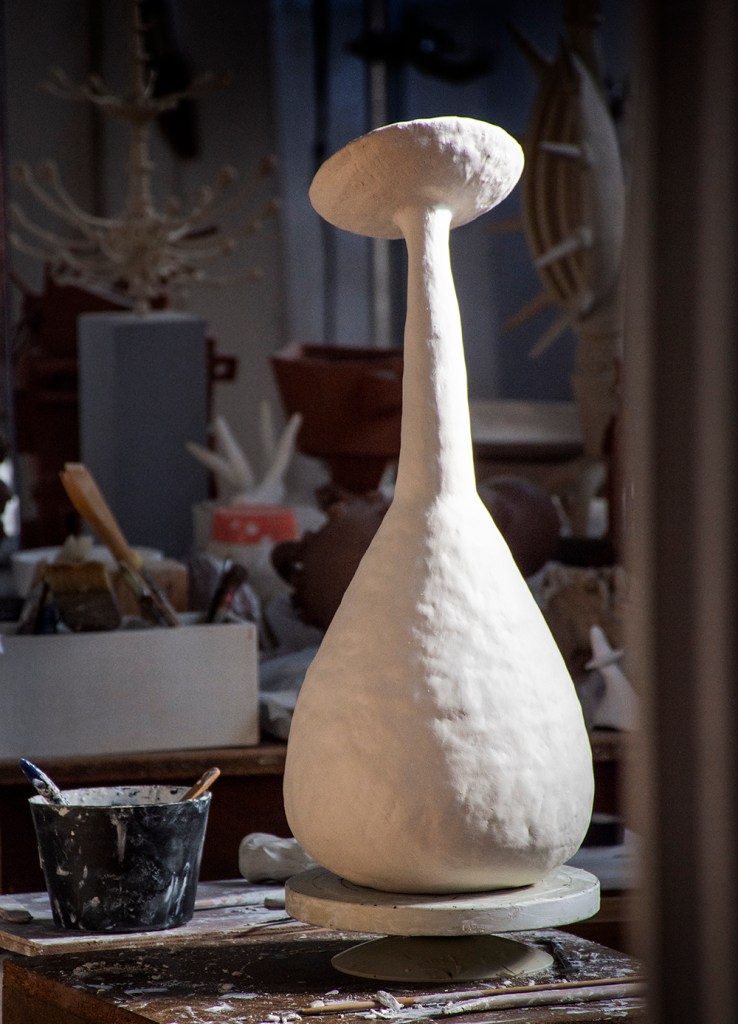Jonathan presented a video split in four parts, looking at William Kentridge describing aspects of his methodology. Full video
Kentridge is one of the few artists today that makes sense in that what he says matches with what he does, yet he leaves things open to the imagination and does not close his argument. His very straight forward description of how he works is refreshing and authentic, telling us how his work has arisen out of his own shortcomings. This reminds me of what Delcroix once said, (I have mentioned this elsewhere in the blog) make your weaknesses your strengths).
Kentridge’s work arises out of the process of its own making, finding its purpose in the moment. Not withstanding this, his videos and animations are carefully planned, they could not be otherwise. He works with contingencies that arise out of his process, not as one might think uncertainty.
Whereas contingency is about events that can not be predicted, uncertainty is the psychological state of anticipation of contingent or uncertain events. Kentridge allows contingency to direct his process, certain of what he is doing but unable to predict the outcome.
His working process for the animations gives him time to reflect in action between takes and therefore develop a narrative that evolves spontaneously under his direction. This last aspect is very important because he is in full control of what he does but allows the material to e itself from which he infers his direction. This also produces discontinuities that subliminally offer interpretations that become more concrete as moments in the narrative accrete not to mention surprising aesthetic moments.
We talked about our respective speeds of working and how that impacts on our work. How time is needed to reflect and think about what we are doing and next steps. Also using process surprises as a source of inspiration and ideas. How the unpredictable is a source of creativity. This brings to mind Margaret Boden’s idea of creativity being something surprising, novel and of value. What value means in this context is an interesting question, one I shall leave for now.
The fracturing of narratives and of objects could be seen as a reflection of contemporary society. And his fracturing of time and coalescing dialogues in conversation over different time frames in one scene to me is like the reformation of the self. An internal dialogue made external in the work. It holds up a mirror to how we think and act. Kentridge to my mind is attempting to express an order out of chaos, bring to light evanescent correspondences. He is rediscovering the world.
‘make sense of the world, rather than an instruction of what the world means’
What Kentridge appears to be doing is to reform his perception of the world in an act of reconciliation with it. He is coming to terms with the world as it is rather than trying to explain why it is like that at all. He is perhaps saying that one does not have to look for meaning, for purpose; rather just wonder at it and discover how marvellous it is; how subjectivity is important in our perception of the world.
Jonathan asked me, Alexis in your working process are you ‘making sense of the world’?
Me: I suppose I [am] by embracing the world as it is and responding to it in some way.
Jonathan: Alexis through the material first and foremost?
Me: I suppose I a materialist in the way I work
But material without thought is inert
material can be moved by the imagination and flexed into different modes
Another thing Kentridge says is that looking for certainty is futile. The future is a question of probabilites, and that way of thinking is counterintuitive for us humans. We are programmed to seek certainty: if you are certain that that tiger will eat you, you live on to pass on that idea. Certainty is how we try to make sense of the world, but uncertainty is the way the world works. The two concepts are at odds. The former is comforting, the latter disquieting.
However, what Kentridge is getting at is perhaps more socio-political. Certainty leads to being dogmatic, being uncertain more likely to engender exploration. He describes how dogmatic individuals raise their voice and assert they standpoint loudly as though to counteract the quiet voice of uncertainty, of questioning.
Jonathan always bring things back to artistic practice, which is so useful:
certainty can be dogmatic and arrogant but often the perceived certainty is not very solid and the reality is much more uncertain – the value of art can be argued is in that it actively engages with uncertainty in order to discover new possibilities, ideas, surprises etc etc
Another notion briefly alighted on was that of undertainty and purpose being entwinned but decoupled, not necessarily causally related. This is the point where I thought of the term used in quantum theory, entanglement.
The final video clip catalysed a discussion about self criticism of one’s own practice. How fragile one can be in the moment of observing one’s own work. Jonathan left us with these quotes:
‘The sane human being is satisfied that the best he/she can do at any given moment is the best he/she can do at any given moment…
Making art provides uncomfortably accurate feedback about the gap that inevitably exists between what you intended to do, and what you did…
To all viewers but yourself, what matters is the product: the finished artwork.
To you, and you alone, what matters is the process: the experience of shaping that artwork.
The viewers’ concerns are not your concerns (although it’s dangerously easy to adopt their attitudes.) Their job is whatever it is: to be moved by art, to be entertained by it, to make a killing off it, whatever.
Your job is to learn to work on your work.







